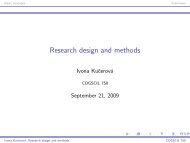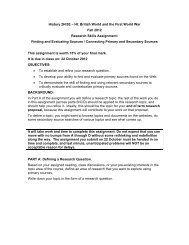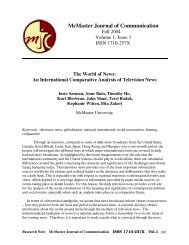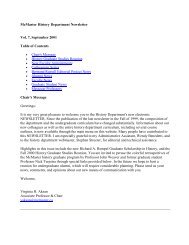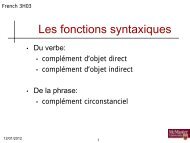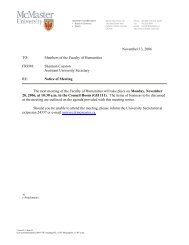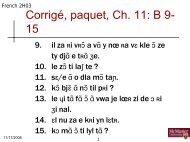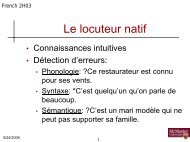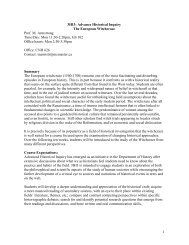The Syntax of Givenness Ivona Kucerová
The Syntax of Givenness Ivona Kucerová
The Syntax of Givenness Ivona Kucerová
Create successful ePaper yourself
Turn your PDF publications into a flip-book with our unique Google optimized e-Paper software.
Appendix A<br />
G-movement is A-movement<br />
To complete the overall picture <strong>of</strong> the properties <strong>of</strong> G-movement I will address in this<br />
appendix the question <strong>of</strong> whether G-movement is A-movement or A-bar movement. In<br />
particular, I will argue that G-movement is A-movement in the sense that it creates a new<br />
binding configuration. But first I will define what I mean by the A- versus A-bar distinction.<br />
<strong>The</strong>re has been disagreement in the literature about classifying scrambling as A-movement<br />
or A-bar movement. <strong>The</strong> disagreement lies in how we define the distinction between A-<br />
and A-bar movement in the first place. For approaches that base the distinction on Case assignment,<br />
there are two basic options: Either (i) only a DP that is assigned Nominative can<br />
move to Spec, TP since T assigns Nominative Case; thus, scrambling <strong>of</strong> a non-Nominative<br />
DP is by definition movement to a position higher than Spec,TP and must be an instance<br />
<strong>of</strong> A-bar movement (cf. for example Baker (2003)). Or, (ii) a position like Spec,TP may<br />
be ambiguous between A-movement and A-bar movement depending on whether the DP<br />
that moves there is or is not nominative (see, for example, Bonet (1990); Diesing (1990);<br />
Mahajan (1990)).<br />
On the other hand, it has been argued that A movement and A-bar movement behave<br />
differently with respect to binding (Lebeaux (1988, 1998); Saito (1989); Mahajan (1990);<br />
Chomsky (1993, 1995); Fox (1999); Lasnik (1999)). I will adopt here the binding distinction<br />
over the Case distinction. I will classify as A-movement only movement, where the<br />
pronounced copy is relevant for binding, and as A-bar movement movement where the pronounced<br />
copy is not relevant for binding. 1 It is outside <strong>of</strong> the scope <strong>of</strong> this work to explain<br />
why there should be such a difference between A- and A-bar movement. 2<br />
In particular, I will follow recent proposals for Russian (see Lavine and Freidin (2002);<br />
Bailyn (2003, 2004), among others) that movement to Spec,TP in Russian, even if it is<br />
movement <strong>of</strong> an object, is always A-movement, i.e., it creates a new binding configuration.<br />
1 I simplify the discussion here. It has been argued that A-movement can reconstruct as well (see, for example,<br />
an overview in Iatridou 2002). <strong>The</strong> question <strong>of</strong> reconstruction is immaterial for the current discussion.<br />
<strong>The</strong> only relevant difference is whether the pronounced copy counts for binding or not.<br />
2 One option is that being A- or A-bar follows from a feature composition <strong>of</strong> a particular projection, not<br />
from the type <strong>of</strong> a projection per se. See Nevins and Anand 2003 for an idea in this direction.<br />
133





